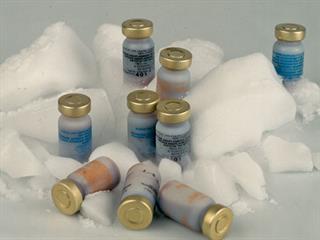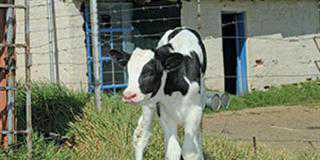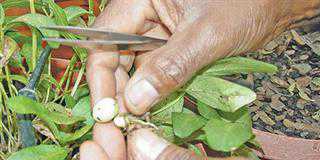
No vaccine provides 100% protection to a herd or flock, as not all animals will react equally well to the vaccine. Put another way, the fact that an animal has been vaccinated gives no assurance that it will be protected against the specific disease. Immunisation may fail for several reasons:
- Mistakes made when administering the vaccine;
- The vaccine not being up to standard;
- A problem in the way the animal reacts to immunisation.
Administration of vaccine
Mistakes made during vaccination may lead to weak immunity, or none at all. They include:
Giving an insufficient vaccine dosage: This may be done on purpose (to save money, perhaps) or it may occur due to a defective automatic syringe. Never administer a smaller dose of vaccine than recommended; the animal will develop weak immunity.
Vaccinating at the wrong age: An animal may be too young when it is immunised – for example, a two-week-old calf being vaccinated against malignant oedema. This will result in the development of a weak immunity or no immunity.
Vaccinating during a disease outbreak: If you vaccinate cattle that appear healthy but in fact are in the incubation period of lumpy skin disease during an outbreak, they will not be protected and are likely to contract the disease.
Neglecting to give a booster: Cattle immunised for the first time against diseases such as botulism, blackquarter, malignant oedema or Rift Valley fever (inactive vaccine) must be inoculated a second time after three to four weeks. If this is omitted, the cattle will not develop a sound immunity and will not be protected against the disease.
Administering live bacterial vaccines and antibiotics: Do not administer antibiotics in conjunction with a live bacterial vaccine for calf paratyphoid, anthrax or Brucella abortus. Immunise animals that have been treated with antibiotics only after
the effect of the antibiotic has dissipated (a minimum waiting period of three days). Antibiotics will destroy the bacteria in the vaccine and the animal will not develop immunity. In addition, never vaccinate an animal being treated with cortisone or antibiotics, as these suppress immunity.
Administering more than one vaccine at the same time: This causes disruptive interference and is especially true of live vaccines. Administer only one live vaccine (such as for lumpy skin disease, three-day stiff-sickness, Rift Valley fever or brucellosis) with two inactivated vaccines (such as blackquarter, botulism or malignant oedema) on the same day. A combination of inactivated vaccines such as those for malignant oedema counts as one vaccine.
Mixing different vaccines in a syringe: This may impair immunity.
Injecting at the same site: When more than one injection is administered at the same time, injection sites should be some distance apart, for example, on either side of the neck.
Not following the annual immunisation programme precisely: Annual vaccination against malignant oedema, for example, ensures that animals develop a sound immunity level against this disease. If this annual vaccination is neglected, the animals’ immunity will not be optimal and mortality may occur should the animals become infected.
Insufficient colostrum-derived immunity: Should a newborn calf or lamb not ingest sufficient high-quality colostrum from its immunised dam (protected against Escherichia coli bacteria, for example) within six hours of birth, it will not be protected against the disease.
The Vaccine
There are several reasons a vaccine may not be up to standard:
It has expired
An animal immunised with an expired vaccine may not develop immunity.
If liquid, it is poorly mixed
Ensure that the vaccine is mixed well by gently shaking the bottle several times before drawing the vaccine into the syringe.
It has been damaged
Exposure to heat, direct sunlight or freezing (only liquid vaccines) can damage vaccines. Maintain the cold chain at all times.
The diagnosis is wrong
Should an incorrect diagnosis occur and the animal is immunised against the wrong disease, it will not be protected against the actual disease. Entrust the diagnosis of the disease or cause of death to a vet.
Instructions have not been followed
Always ensure that the mixing instructions are complied with.
Email Dr Jan du Preez, managing director of the Institute for Dairy Technology, at [email protected], or Dr Faffa Malan, manager of the Ruminant Veterinary Association of SA, at [email protected].













